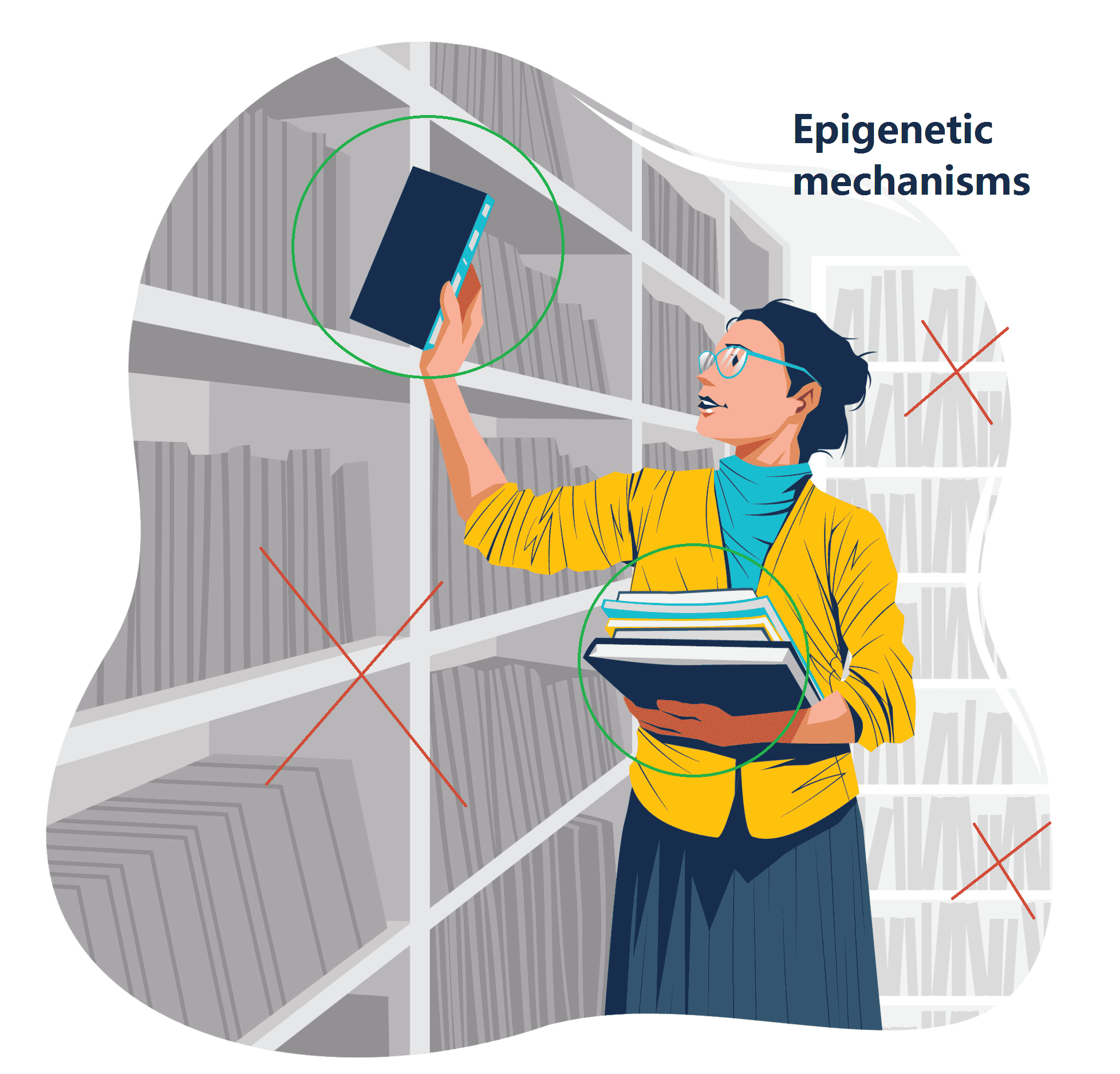
We are more than our genes
Epigenetics simply explained
Genes and genetics are now terms that almost everyone knows. But have you heard about epigenetics so far?
We – humans, but also every being, from the smallest plant to the largest animal, consist of cells. In these cells is the DNA (deoxyribonucleic acid), which is divided into information-rich sections – our genes.

Human DNA by Graphics RF from vecteezy.com
If you think about our DNA as a kind of library, your genes are like different books. Have you ever thought about to read every single book of a library? How much energy and time would it cost? Now imagine, a friend of yours helping you to find these books that are interesting for you, so you do not have to search on your own.
This friend is the epigenetics, that determines which books are available in the bookshelf of our library and which are hidden in the archive.
It is similar in the cell – the human being has more than 200 types of cells, and nearly every cell contains the same DNA sequence. But not all the genes are active in each cell, because this would be energy-wasting for the cell.
That is why, only genes that are needed are switched on (the books on the shelves). The rest is targeted silenced through chemical marking (and therefore stand in the archive). Epigenetics acts as a part of a control mechanism that decides, when which gene is switched on and when it is switched off again and is therefore considered the link between environmental influences and genes.

Woman librarian by JustCallMeAcar from vecteezy.com
This is how we can react to environmental changes, although the DNA does not change itself. Not only we can adapt to environment easier, but we can also influence how our genes are regulated, this is possible, for example, through nutrition.
Pointing to Monozygotic twins – which are genetically identical and hardly differ from each other when young. Nevertheless, the older they get, the more epigenetic differences they have. This mainly happens through various types of diet and lifestyle.
Genes can influence the intake or the metabolism of food, but we can in turn also have an indirect impact on our genes through epigenetic mechanisms such as DNA methylation and micro RNA. Therefore, we also should look at genetics and epigenetics in connection.
DNA methylation can be imagined as a light switch with dimming function. A methyl group binds on the DNA and switches it off. Several studies have shown, there are some interesting locations on the DNA with different numbers of methyl groups through which, depending on how many methyl groups are present, the light, meaning the gene signal, is stronger or weaker. Genes are regulated through these mechanisms, that are associated with aging, inflammation, metabolism and diseases. A higher DNA methylation of the gene LINE-1 indicates a more stable DNA and younger cells and can be achieved through a healthy diet and lifestyle. In addition to LINE-1 as an example for an epigenetic biomarker there are many more.
If our genes tell us to store more fat, that does not matter because we are more than just our genes. Because we can use epigenetic mechanisms to control many of our genes and turn off the “bad genes” while we turn up the “good genes“. Furthermore, epigenetic biomarkers can help us in prevention and early detection of some diseases.
Our Metabolic Health Panel provides you not only with informations about your genetic predisposition to metabolize food but also your epigenetics.

Genes and environment by Graphics RF from vecteezy.com
Micro RNAs are a further possibility to indirectly influence our genes. You can find them in every body fluid having diverse regulatory tasks throughout the organism. They are involved in several biological processes and are therefore also suitable as biomarker. Micro RNAs can give more detailed information what is happening in our body. They can be affected through diet and sport, but also chronical and acute stress can have an impact. These changes can be measured in the blood relatively early on, even before (e.g., stress-related) symptoms have developed.
Determine your cellular stress level now using our Stress Monitor Panel! After analyzing your microRNA, you will receive a report of your physiological stress level and the risk of long-term effects. In addition, we support you in reducing stress with personalized recommendations.





